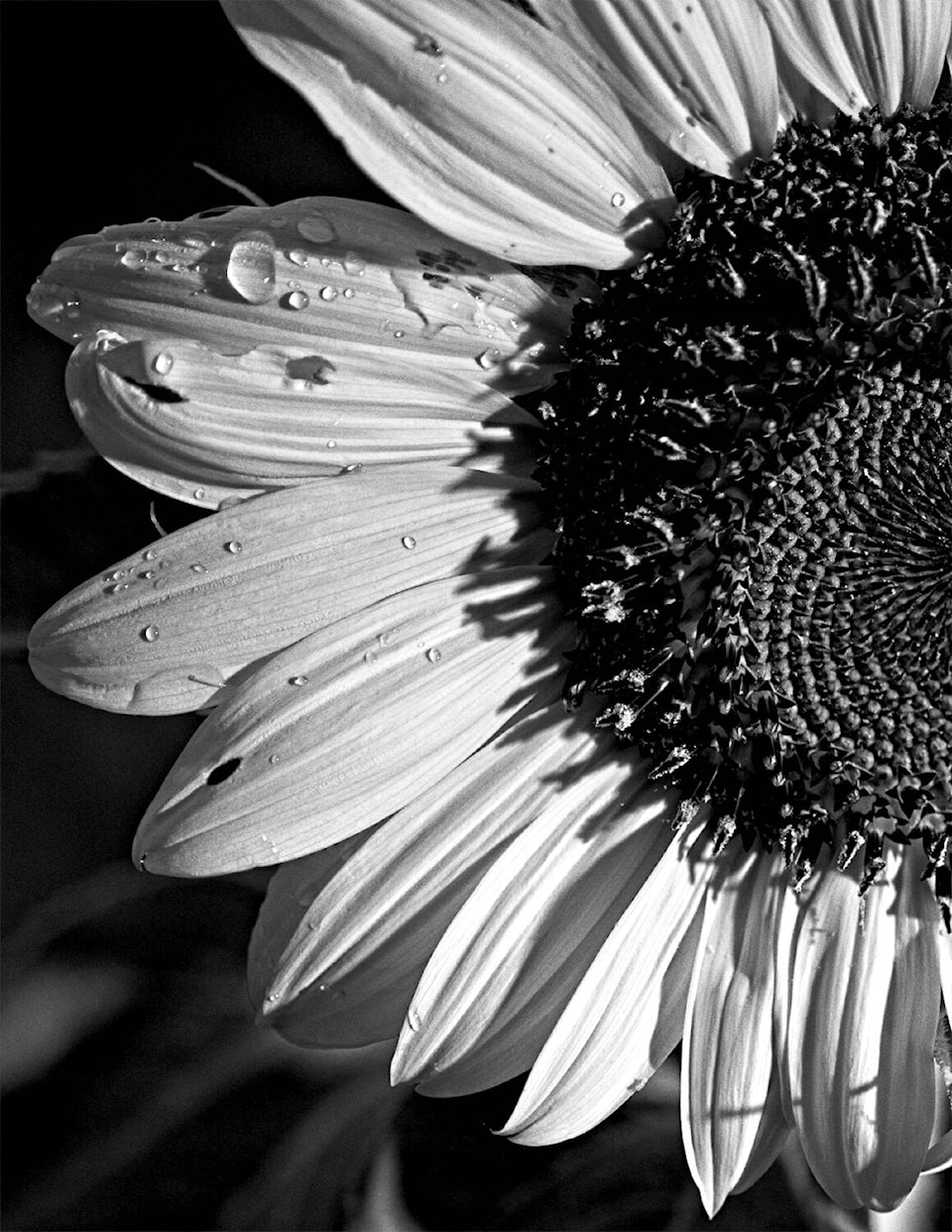My yard finally got some rain recently and the weather seems to be cooling down. I guess summer is nearly over and with luck the long dry fire season might have passed.
I walked around my yard and decided it would be fun to photograph the rain droplets that were lingering on the plants. I wrote about using a ring flash a couple of weeks ago and I could have used that again. A ring flash works great when it’s raining, or just after a heavy rain. But this week’s rain was light and although everything was wet the clinging raindrops were small. So I choose an off-camera flash.
I put a 200mm macro lens on my camera, mounted the camera on a tripod, put my big flash on a stand, and walked out to see what there was in the damp garden that would be the best to photograph.
I have written about using off-camera flash before. For those new to flash I’ll review a few things. Modern flashes are TTL. (Through-The-Lens) The light is reflected back through the camera lens, and small computers meter the exposure and adjust the lighting output.
For years photographers have been limited to particular shutterspeeds. At times the shutter couldn’t be faster than the flash or the photo would only be partially exposed.
All that has changed with Digital technology. We now have a feature called High Speed Sync (HSS). HSS allows us to use very high shutter speeds. Where we once were limited to 1/60th of a second, we now can use up to 1/8000th of a second. The flash of the past gave one large burst at either the beginning or the end of the exposure. Now we can set our flash, and have many small bursts that continue through the length of the exposure.
For close-up photographs I rely on HHS. I used to place a small black velvet backdrop behind my flowers. Now I begin by metering the ambient light, then under expose by one, two, or more stops to reduce the background exposure so that only the main subject (leaf or water drop on a branch) is exposed. The TTL flash will regulate the flashes light to a near perfect exposure. That will give me a properly exposed flower petal, on a black background without the need for the black cloth.
I position the flash far enough back and off to one side so the light will help build depth, detail and contrast in the subject.
It’s always fun to wander through the garden to photograph the plants. I must have thousands of photographs of that garden as it changes throughout the seasons (and years). I don’t really do much with my photos, but once in a while I might print one up and use it for some kind of card, but mostly I just enjoy the process of making the picture.
Photographing a garden is quiet and not something done in hurry. It’s a calming process.
Stay safe and be creative. These are my thoughts for this week.
Contact me at www.enmanscamera.com or emcam@telus.net.
_______________
Like us on Facebook
